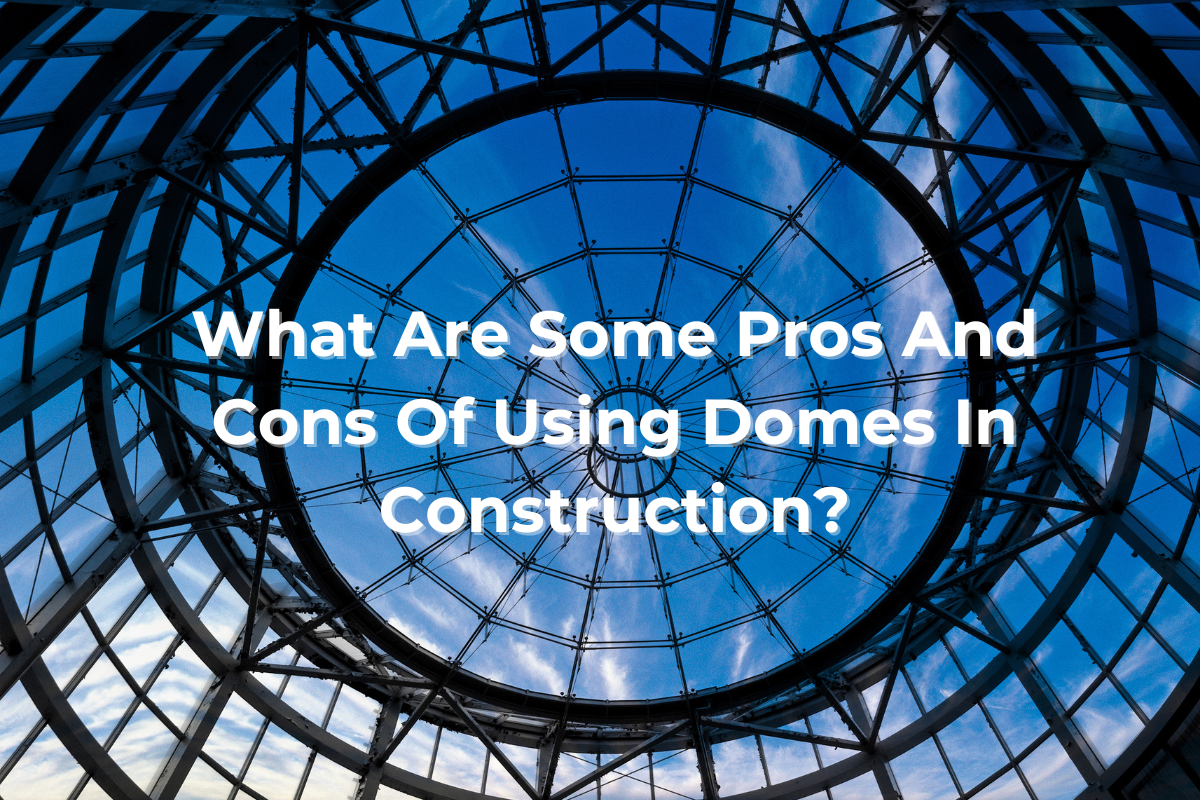
The Pros and Cons of Using Domes in Construction
As the construction industry continues to innovate, architects and builders are constantly exploring alternative building designs that offer efficiency, sustainability, and unique aesthetic appeal. One such design gaining attention is the use of dome structures in construction. Domes have been used throughout history—from ancient Roman architecture to modern-day energy-efficient homes—but are they a practical option for contemporary construction projects? In this blog, we’ll explore the pros and cons of using domes in construction to help you decide if they might be a suitable choice for your next remodeling project.
What is a Dome Structure?
A dome is a curved, hemispherical structure that relies on compressive forces to distribute weight evenly. Domes are often used in large-scale buildings like sports stadiums, religious structures, and greenhouses, but in recent years, their use has expanded to residential homes and smaller buildings. The geometric shape allows for strength, stability, and efficient energy use, making them an attractive option for certain types of construction projects.
Pros of Using Domes in Construction
1. Strength and Durability
One of the most significant advantages of using domes in construction is their structural strength. The curvature of a dome helps distribute weight evenly across the entire structure, making it incredibly resilient to external forces like wind, snow, and even earthquakes. The ancient Romans were aware of this benefit, and many of their iconic domed buildings, like the Pantheon, have withstood the test of time for centuries.
In modern construction, the use of reinforced materials such as concrete, steel, or carbon fiber can make domes even stronger. The inherent strength of the dome design means it requires fewer materials to achieve the same level of stability compared to traditional rectangular buildings, potentially lowering overall construction costs.
2. Energy Efficiency
Domes are highly energy-efficient due to their shape. The rounded surface of a dome allows for better airflow and more even temperature distribution inside the building, reducing the need for heating and cooling systems. This natural air circulation minimizes hot and cold spots, making it easier to maintain a comfortable indoor climate.
Additionally, because the surface area of a dome is smaller than that of a traditional building with the same volume, it loses less heat in the winter and gains less heat in the summer. This can significantly reduce energy consumption and utility costs, making domed buildings a great option for those looking to minimize their environmental impact.
3. Cost-Effective Construction
Domes can be more cost-effective to build than traditional structures. The simplicity of the shape means there are fewer materials required for the frame and foundation, and the reduced need for additional internal supports can result in lower construction costs. Additionally, the efficiency of the design can lower long-term operating costs, as mentioned above, making domes a more economical choice in the long run.
4. Aesthetic Appeal
Domes are not just functional; they are also visually striking. Their unique, organic shape stands out in any landscape and can create a sense of harmony with the natural environment. Many homeowners and businesses are drawn to the beauty of a domed structure, as it offers a futuristic and bold aesthetic that differs from traditional boxy buildings.
Domes also offer a lot of flexibility in terms of design, as they can be customized in various sizes and shapes. Whether you’re looking for a large, open-concept living space or a small, intimate retreat, a dome can be adapted to suit your needs and taste.
5. Sustainability
Domes can be a sustainable choice for construction due to their energy efficiency and the potential to use eco-friendly materials. For example, a geodesic dome—a specific type of dome made up of interconnected triangles—can be constructed with natural materials like bamboo, earth, or recycled materials. This makes domes an attractive option for those interested in reducing their carbon footprint and supporting green building practices.
Cons of Using Domes in Construction
While domes have many advantages, there are also some potential drawbacks that should be considered before choosing them for your next project.
1. Limited Space Efficiency
One of the primary disadvantages of dome structures is the limited usable floor space. Because the walls of a dome curve inward, the amount of floor space at the perimeter of the building is often unusable. This means that the usable interior space may be less than that of a rectangular building with the same exterior dimensions.
In particular, for larger homes or commercial buildings, the curved walls can make it difficult to create a layout that fully utilizes the available space. Furniture placement and room organization can also present challenges, as standard furniture is typically designed for traditional square or rectangular rooms.
2. Complex Construction Process
While dome structures can be cost-effective in terms of materials, their construction can be more complex than traditional buildings. The need for specialized tools, skills, and expertise to construct a dome means that it may take longer to build compared to a standard home or commercial structure.
Additionally, many contractors may not be familiar with the intricacies of building domes, which could make it harder to find qualified professionals for the job. This could also lead to higher labor costs or delays during construction.
3. Zoning and Permitting Challenges
Not all zoning codes or local building regulations are designed with dome structures in mind. Many areas have strict building codes that are tailored to traditional rectangular or square buildings, which could present challenges for getting approval for a dome project.
Before committing to a dome design, it’s essential to check with local building authorities to ensure that the construction will comply with local regulations. If adjustments need to be made to meet code requirements, this could result in additional costs and delays.
4. Maintenance Challenges
While domes are durable, maintaining a domed structure can present unique challenges. The curved surface may make it harder to access certain parts of the building for repairs or maintenance tasks. For example, cleaning windows or making roof repairs could be more complicated than with a traditional flat roof.
Additionally, certain weather conditions, such as heavy snowfall, can cause issues with domes. While domes are generally good at shedding snow due to their curvature, excessive accumulation could lead to structural damage if the dome isn’t built to handle such loads.
5. Limited Design Options
While domes can be customized to a certain extent, they still offer fewer design options compared to traditional construction. If you have a specific vision for your home or business, you may find the dome shape restrictive. For example, you may need to adjust your layout to accommodate the curved walls, and you may not be able to achieve the exact look you want without significant alterations.
Conclusion
Domes can be a fantastic choice for specific construction needs, offering benefits like strength, energy efficiency, and sustainability. However, they also come with limitations in terms of space efficiency, construction complexity, and potential zoning challenges. If you are considering using domes in your next construction project, it’s essential to carefully weigh the pros and cons to determine if this unique building design aligns with your vision, budget, and long-term goals.
At S&E Remodeling, we are committed to helping you find the best solutions for your remodeling projects, whether you choose a traditional or innovative approach. If you’re interested in learning more about domes or discussing how they might fit into your upcoming renovation, don’t hesitate to get in touch!

